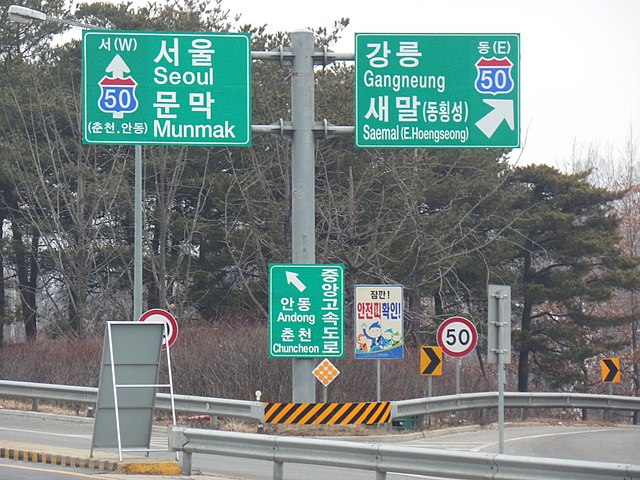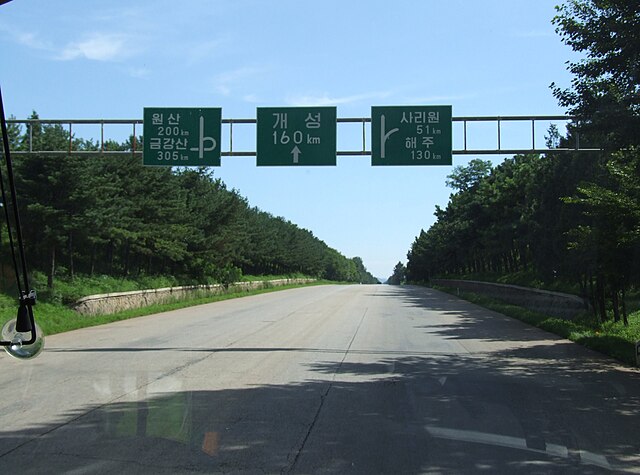The Korean alphabet, known as Hangul in South Korea and Chosŏn'gŭl in North Korea, is the modern official writing system for the Korean language. The letters for the five basic consonants reflect the shape of the speech organs used to pronounce them, and they are systematically modified to indicate phonetic features; similarly, the vowel letters are systematically modified for related sounds, making Hangul a featural writing system. It has been described as a syllabic alphabet as it combines the features of alphabetic and syllabic writing systems.
A page from the Hunminjeong'eum Eonhae. The Hangul-only column, third from the left (나랏말ᄊᆞ미), has pitch-accent diacritics to the left of the syllable blocks.
Songangasa, a collection of poems by Jeong Cheol, printed in 1768.
ㅁ (m) is similar to a closed mouth.
Harvard professor Edwin Reischauer, a Japanologist, regarded Hangul as a highly logical system of writing.
Korean is the native language for about 81 million people, mostly of Korean descent. It is the official and national language of both North Korea and South Korea. The language has notable differences in each of the Koreas, in part owing to different official standardizations of the language. They are still largely mutually intelligible, however. South Korean newspaper Daily NK has claimed North Korea criminalizes the use of the South's standard language with the death penalty, and South Korean education and media often portray the North's language as alien and uncomfortable.
The oldest Korean dictionary (1920)
The Latin alphabet used in romanization on road signs, for foreigners in South Korea
Highway sign in Korean, Reunification Highway, Pyongyang, North Korea
Highway sign in Korean and English, Gyeongbu Expressway, Daegu, South Korea








